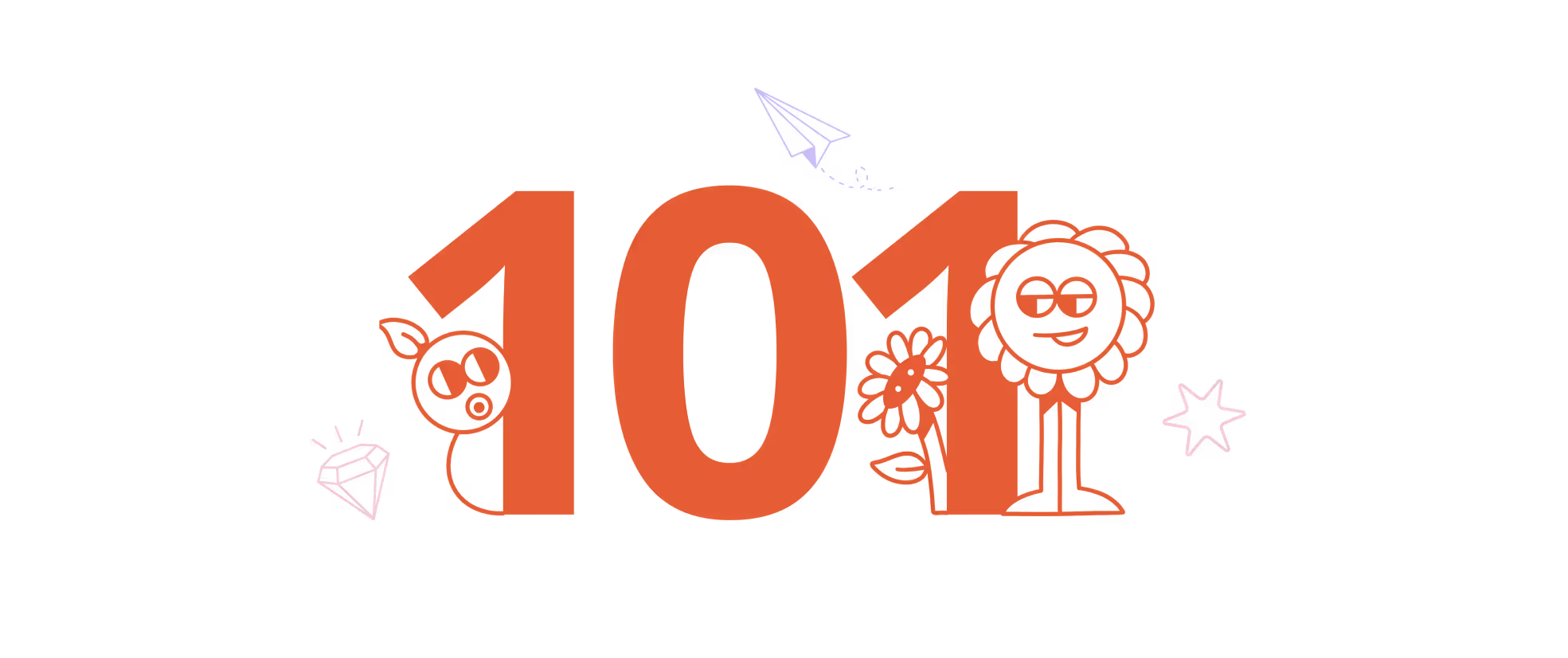Words that convert: secrets to writing copy that drives results
People think websites sell products and services, but they don’t. Words do.

Max White
Copywriter & Strategist
Max is often found searching west-county coastlines for the perfect “right-hander”. We’re not sure what that means, but he seems to enjoy the never-ending hunt for waves. He also happens to be a pretty handy wordsmith.
Max White
Copywriter & Strategist
Over 250,000 new websites are launched every day and Webflow alone hosts over 7.5 million new blog posts each month. As a marketing lead, social media manager or founder, this might leave you scratching your head and questioning how you can write words that will stand out.
But fret not, we’ve devised a fool-proof set of considerations for just this occasion. Want to learn how to boost your sales and get people to take action from your words?
Read on.
Identify your target audience
Before you start writing any copy, it's important to identify who you’re speaking to. Without strategic and in-depth research, you’ll find yourself shouting into a void of noise – nobody wants that!
We find it helps to think of it as a public speaking exercise and to picture your audience in the room. How old are they? What are their shopping habits? Are there any common traits and characteristics which you can use to elevate your marketing?
A clear and in-depth understanding of demographics, needs and pain points will help you create messaging that is relevant, useful and effective. This in turn will increase the likelihood of engagement and action, giving you a greater return on your investment.
Bonus tip. Don’t fall into the trap of writing about yourself and the amazing things you can do. Let your user take centre stage and highlight how your services can solve their problems.
Understand your customer journey
To write effective conversion copy, you need to understand the customer journey and what drives your audience to take action. Consider each step that your customers go through as they interact with your brand.
What are their motivations and goals? Are they looking for more information or are they looking to make a purchase?
How you tailor your messaging to suit their needs and desires at each stage is vital to click-throughs and action - and you must clearly articulate what you’ll offer the customer. “Book a free demo” is far more convincing than “Get in touch”.
Consider your competition
Then consider what your competition is doing regarding conversion copy. Look at their messaging and identify what feels on brand and what does not follow your guidelines – this will act as a good baseline for your own copy.
Bonus tip: head here for advice on finding your tone and voice.
In order to stand out and create differentiation (a foundational aim of brand strategy) ask yourself what your competitors are not saying, or not doing. Avoid mimicking the “popular” or “done” thing, focusing instead on features and writing styles that are unique to your brand.
Use a pyramid writing style
A pyramid writing style is a structure where the most important information is placed at the beginning, followed by supporting details. For example…
Hook: Building tomorrow's brand today.
Subheadline: Overpass Studio® is a strategic brand and website design agency that guides the next generation of start-ups to shape the future.
This is an effective way to write conversion copy because it hooks a reader right from the first few lines and then provides the supporting context they may wish to know before they take action with a brand.
Make your copy benefit-focused
Rather than simply listing features, focus on how those features will improve the reader's life in some way. These can be functional or emotional benefits – as humans, research strongly suggests that we make purchase decisions often on an emotional level rather than a logistical one.
For example, rather than saying "Our product has a long battery life," you could say "Our product will keep you connected all day, so you never have to worry about running out of power."
“Never overpay for flights again” is much more compelling on an emotive level than “cheap flights for your next holiday”.

Keep it simple
When it comes to conversion copy, less is often more. Keep your messaging clear and to the point. Avoid using flowery language or long, drawn-out sentences.
Where possible, try to use the language your target audience is familiar with and speak directly to them. “You can” is much more engaging and persuasive than “we like to”.
Use images and design to support your words
Unless you’re writing a novel, steer well clear of long bodies of text. Your customers want the information they came for, as fast as you can give it to them and in a manner that’s pleasing to the eye.
Using images and design elements (including blank space) will help illustrate the benefits of your product or service and keep your consumer engaged.
Use social proof
Incorporating social proof into your conversion copy can be a powerful way to build trust and credibility. This can include statistics, customer testimonials, reviews, and even social media followers.
What did we do in the first lines of this article? We proved why the rest of this article is so important to you
But not all social proof is equal. A video is more powerful than a quote, a quote with a photo of a real person is more powerful than just a quote. An accrediting body like Trustpilot is a cherry on top.
Create an easy path and give them a nudge
The goal of conversion copy is to get the reader to take action. Make it easy for them to do so by including a clear call to action (CTA) and making sure the path to conversion is straightforward. You’ll find that direct language works best.
“Level up your fitness and get your first month free” is much more persuasive than “try our fitness program”.
Optimise your copy
Finally, it's important to optimise your copy to ensure that it is effective. Just because the content has inherent values, it doesn’t mean it will rank highly on SERPs and beat the algorithms.
Consider using tools such as SurferSEO, Ahrefs or google search tools to optimise your headings, content, metadata and other search engine optimisation factors.
Now we wouldn’t be playing by our own rules if we didn’t end with a strong CTA. So how’s this?
Book your absolutely totally 100% free brand consultation with us today
And when all else fails and you’ve forgotten the first 9 tips. Write to entertain or inform. Nothing in between.


